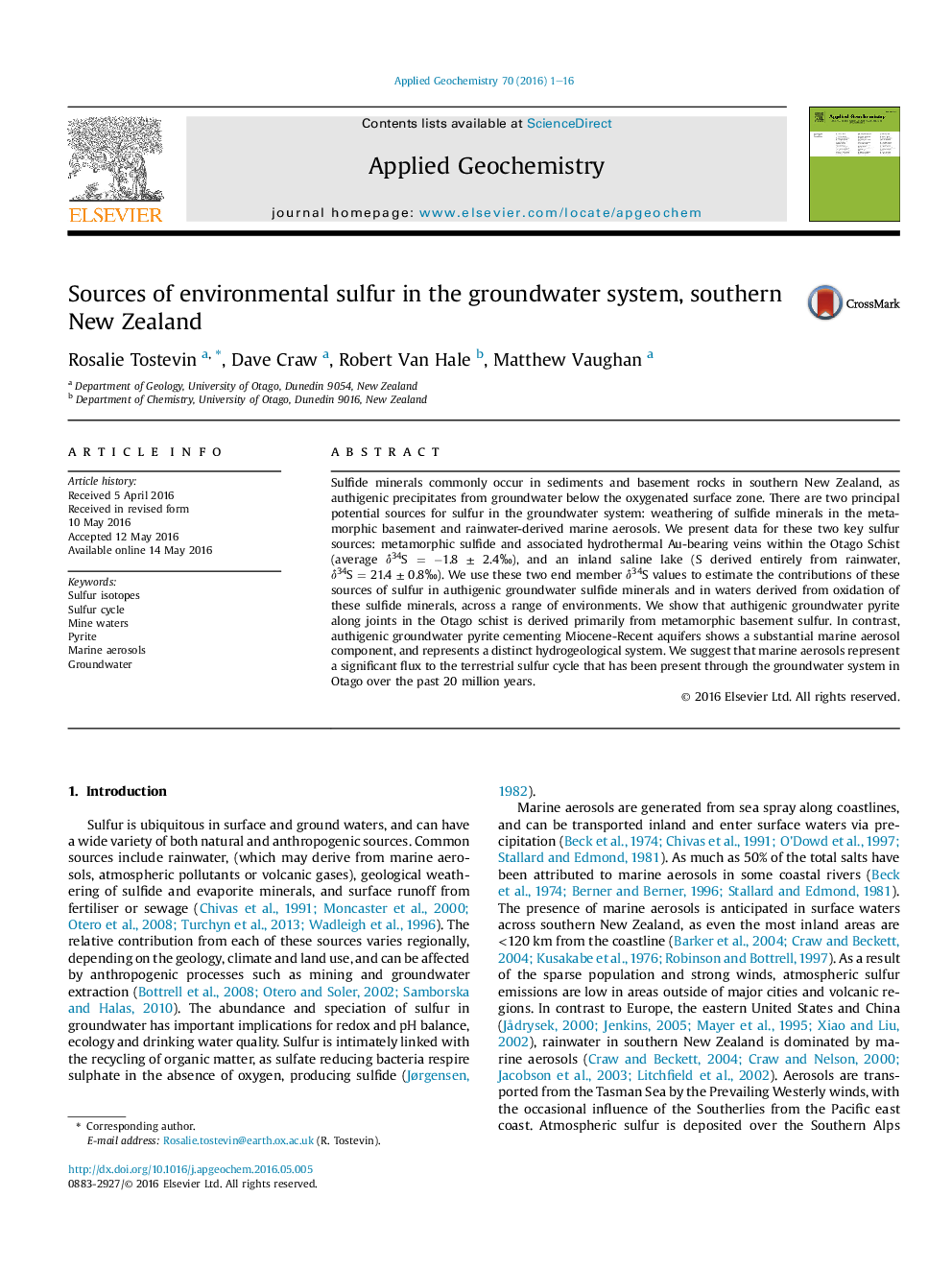| Article ID | Journal | Published Year | Pages | File Type |
|---|---|---|---|---|
| 4435549 | Applied Geochemistry | 2016 | 16 Pages |
•Distinguish three different sulfur sources using SO4/Cl ratios, δ34SSO4 and δ18OSO4.•Authigenic groundwater sulfide minerals record sulfur sources in palaeo-groundwater.•Saline lakes and surface waters dominated by sulfur delivery from marine aerosols.•Joints in basement rock are dominated by sulfur derived from basement weathering.•Temporal changes in tectonics, climate and human impacts altered sulfur fluxes.
Sulfide minerals commonly occur in sediments and basement rocks in southern New Zealand, as authigenic precipitates from groundwater below the oxygenated surface zone. There are two principal potential sources for sulfur in the groundwater system: weathering of sulfide minerals in the metamorphic basement and rainwater-derived marine aerosols. We present data for these two key sulfur sources: metamorphic sulfide and associated hydrothermal Au-bearing veins within the Otago Schist (average δ34S = −1.8 ± 2.4‰), and an inland saline lake (S derived entirely from rainwater, δ34S = 21.4 ± 0.8‰). We use these two end member δ34S values to estimate the contributions of these sources of sulfur in authigenic groundwater sulfide minerals and in waters derived from oxidation of these sulfide minerals, across a range of environments. We show that authigenic groundwater pyrite along joints in the Otago schist is derived primarily from metamorphic basement sulfur. In contrast, authigenic groundwater pyrite cementing Miocene-Recent aquifers shows a substantial marine aerosol component, and represents a distinct hydrogeological system. We suggest that marine aerosols represent a significant flux to the terrestrial sulfur cycle that has been present through the groundwater system in Otago over the past 20 million years.
